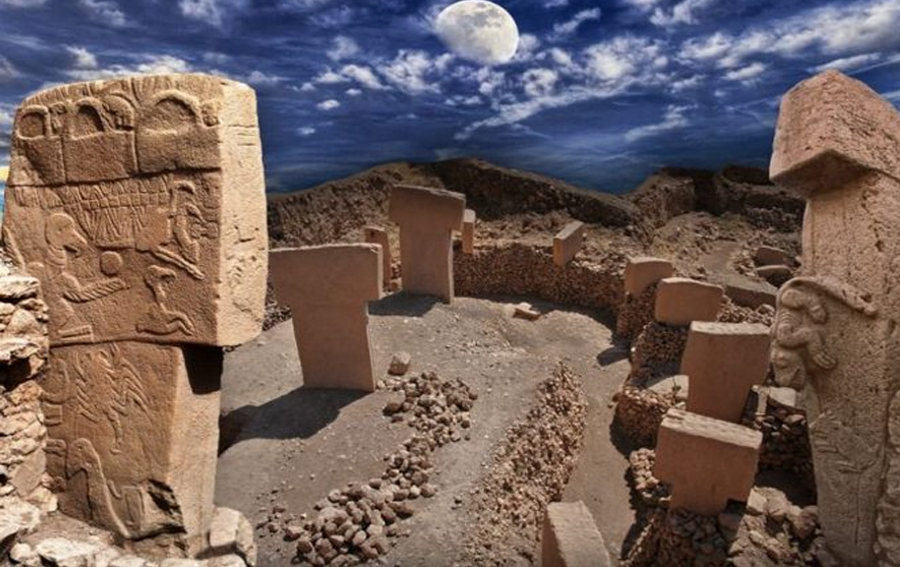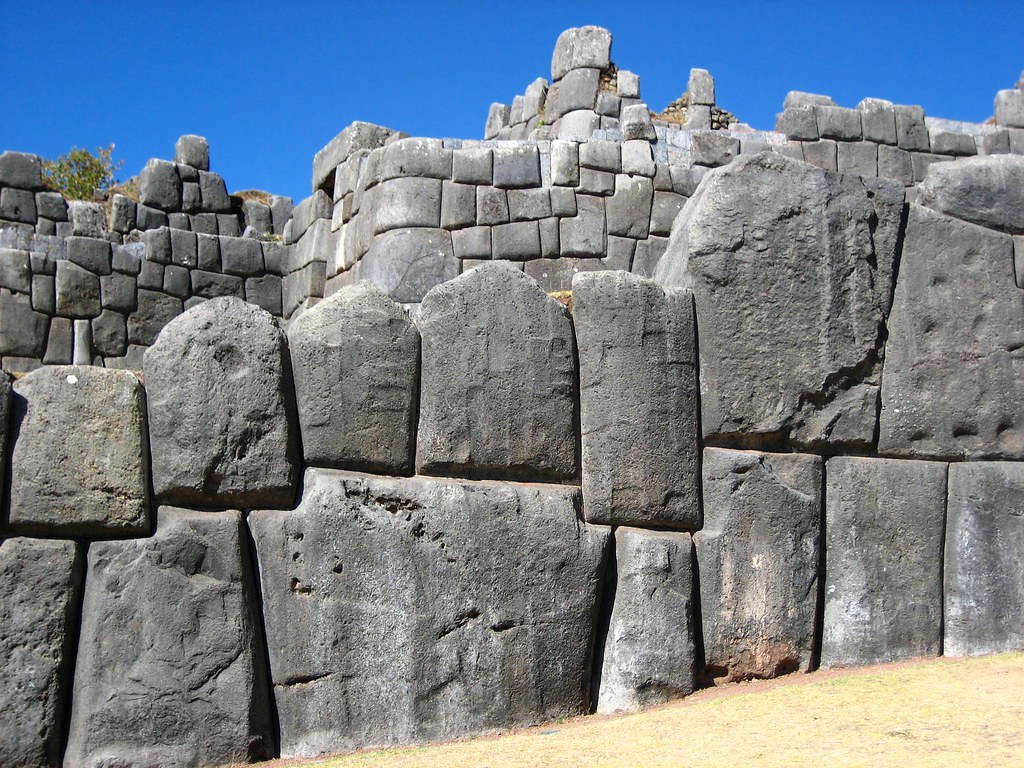By Peter Pavarini

The magnitude 7.8 earthquake that struck Turkey and Syria on February 6, 2023, prompted me to think about the frailty of being human. Despite the many technological advances of the 21st century, our species remains vulnerable to the same cataclysms that have beset us since time immemorial. Today, the world mourns over 46,000 lives lost in the quake, but how quickly did we forget the nearly 230,000 souls who perished in the 2004 Indian Ocean tsunami[i] or the 220,000 killed by the 2010 Haiti earthquake?
Surely, life is as fleeting as it is unpredictable.
The epicenter of this week’s tremor was reported to be near a number of UNESCO world heritage sites.[ii] Most of these have experienced similar catastrophes in the past. While the city of Aleppo in Syria is perhaps the best known of these places, the hilltop shrine of Gobekli Tepe is far more important to our understanding of prehistoric times. When it was discovered by a local shepherd and unearthed by German archaeologist Klaus Schmidt in 1994, this extraordinarily well-preserved site challenged everything experts had thought they knew about Paleolithic culture. Since then, radiocarbon dating has confirmed that the 7-to-10-ton megaliths within Gobekli Tepe were erected at least 12,000 years ago, 7,000 years earlier than Stonehenge or the oldest pyramid at Giza.
When Did Humans First Become “Civilized”?
The discovery of Gobekli Tepe has forced us to reconsider when human civilization actually began. Twelve thousand years ago[iii], anthropologists still contend that all homo sapiens were hunter-gatherers. While these early humans used simple stone tools and produced some incredible cave art, they continued to live at a subsistence level in small bands of related individuals, lacked any form of written language, and had life expectancies of less than 30 years. How then could such a primitive people plan and construct a sophisticated megalithic structure like Gobekli Tepe without technology that wouldn’t appear in the archaeological record for another 7,000 years?
The unexpected antiquity of Gobekli Tepe and other similar megalithic sites has called into question the chronology experts relied upon since the early 19th century. Like many scientific disciplines (such as those relevant to climate change, the origins and treatment of pandemic disease or even the latest fad diet), we have learned to be skeptical of any opinion that follows the words “experts say”.
The Turkish earthquake occurred in a part of the world traditionally known as the “Cradle of Civilization.” While there is some genetic evidence to suggest early humans did in fact pass through this part of Asia Minor after on their long march out of Africa, it’s by no means certain that our ancestors didn’t employ other routes when populating the globe. The Middle East only qualifies as the Cradle of Civilization if you ignore numerous incongruous discoveries that have been made in North and South America, southeast Asia and even Africa.
Paleolithic Humans Knew Much More Than Experts Care to Admit
We now have ample reason to believe our ancestors traveled further and possessed far greater knowledge about the world than contemporary scholars care to admit. In particular, Paleolithic people possessed an advanced understanding of mathematics, celestial mechanics and physical principles – all of which was essential to the construction of megalithic sites in places like Peru, Mexico, the Bahamas, and Indonesia, as well as immense earthen mounds throughout the Americas.

Last year, I had the opportunity to visit several of these ancient sites on a tour of Peru. Needless to say, seeing the Inca city of Machu Picchu is a once-in-a-lifetime experience. Equally impressive, however are a number of ancient pre-Columbian structures in and around Cuzco, the capital of the Inca Empire. Of special significance was a megalithic fortress named “Sacsayhuaman” which overlooks the city itself. This sprawling jigsaw puzzle of polygon-shaped stone blocks averaging 20 tons apiece (some as heavy as 300 tons) was designed and constructed with such precision that it resists the frequent earthquakes in that part of the Andes. Although credited to the Inca people, there is much evidence to support the view that this edifice was actually built thousands of years before the Incas.
Like the Great Pyramid of Giza, the construction of Sacsayhuaman cannot be explained by the mechanical processes and engineering we possess today. Although numerous theories abound, the most probable ones point to a system of physical principles that were known to our ancestors but have somehow been lost. It’s hard for modern people to imagine that an ancient, preliterate culture possessed skills or modes of thought that were more advanced than our own. However, this view has become more compelling with every new discovery.
Disputing the Orthodoxy About Early Civilizations
As dramatically depicted in the popular Netflix series “Ancient Apocalypse”[iv], any doubt about the existence of ancient civilizations more advanced than our own stems from the unreliability of curated history. The notion that the earliest civilizations began only 5,000 to 6,000 years ago was premised on the assumption that humans were incapable of developing specialized skills until they began farming and settled in cities. Had the human race actually begun the process of becoming “civilized” tens of thousands of years earlier, evidence of advanced technology from Paleolithic times would not seem so implausible.
The Importance of the Atlantis Myth
The myth of an ancient civilization that disappeared long before the earliest cities of Mesopotamia and Egypt has been a part of the canon of Western culture since at least Plato’s time. While most accounts of the Atlantis story are surely entertaining, from a scientific perspective, they are not especially convincing. [v] However, we shouldn’t dismiss the importance of the myth itself. Even if Atlantis never existed, our shared memory of an earlier, advanced society has meaning.
All civilizations are to some degree grounded in myth. Mythology is useful to a culture even if it’s not factually accurate. What I find most compelling about the Atlantis myth is the organized resistance of most scholars and other establishmentarians against it. Just as we don’t need to believe in Greek gods and goddesses to find value in their stories, we can take spiritual instruction from what is said to have happened to Atlantis.
As advanced and as opulent as Atlantis might have been, its citizens had become debased by their avarice and thirst for unrighteous power. The gods took note of this decadence and decided to punish the Atlanteans. Old stories like this live on in us today because we see parallels to modern culture, e.g., corrupt leaders, rampant perversion, unearned tribute, falsehood accepted as truth, sloth as an approved lifestyle, etc. Whether it’s an earthquake, a flood, a plague or a comet striking the earth, there seems to be a history of cataclysmic events following the moral decline of a society – no matter how sophisticated it believed itself to be.
Passing the Wisdom of Life from One Generation to the Next
Whatever our kids are learning in schools nowadays, it’s certainly not the wisdom of life. We might be teaching them how to use the latest technologies, how to signal virtue without being virtuous, and how to gratify every carnal desire, but ancestral memories of purposeful living are being suppressed if not cancelled outright.
In his seminal book The Blank Slate[vi], Steven Pinker does an admirable job of refuting John Locke’s contention that all men are born with minds that are devoid of any ideas – in other words, the mind is a “blank slate”[vii]. Before Locke, it had been conventional to believe men were born “prewired” with certain ideals, eternal truths and the notion of God. Pinker concedes that while experience plays a very large role in shaping an individual’s way of thinking, some aspects of the human mind cannot be explained without there being an inherited, genetic memory of things known to be true before a person was born.
As 21st century technology proliferates and societal norms are rapidly revised, what makes us human will certainly wither and fade away unless we nourish our spiritual selves. The stories of old need to dwell richly within us. We must revere our past – even with all of its flaws – less we be forced to repeat the same mistakes over and over again.
[i] Kathryn Reid, “2004 Indian Ocean Earthquake and Tsunami: Facts, FAQs and How to Help”, World Vision (updated December 26, 2019).
[ii] M. Hunter & M. Alberti, “UNESCO Sites In Danger Face Greater Perils After Earthquake, February 7, 2023, www.cnn.com/travel/article/sites-damaged-UNESCO-turkey-syria-earthquake/index.html
[iii] 12,000 years BCE is an important date for many reasons. It approximates the end of the last global glaciation – a time of dramatic change in the Earth’s atmosphere, sea levels and flora and fauna. It was roughly during a period scientists call the Younger-Dryas, which will be the subject of a future blog.
[iv] TV Series featuring British author Graham Hancock was released in the U.S on November 10, 2022.
[v] Mark Adams, Meet Me in Atlantis, Dutton Books (2015); Frank Joseph, Colin Wilson & Rand Flem-Ath, The Atlantis Blueprint, Little Brown & Co. (2000); The Destruction of Atlantis, Bear & Company (2002); J.M. Allen, Atlantis – The Andes Solution, Windrush Press (1998); Charles Pellegrino, Unearthing Atlantis, Vintage Books (1991).
[vi] Penguin Books (2002).
[vii] John Locke, “An Essay Concerning Human Understanding”, Book II, chapter 1, page 26 (1690/1947).

Be First to Comment